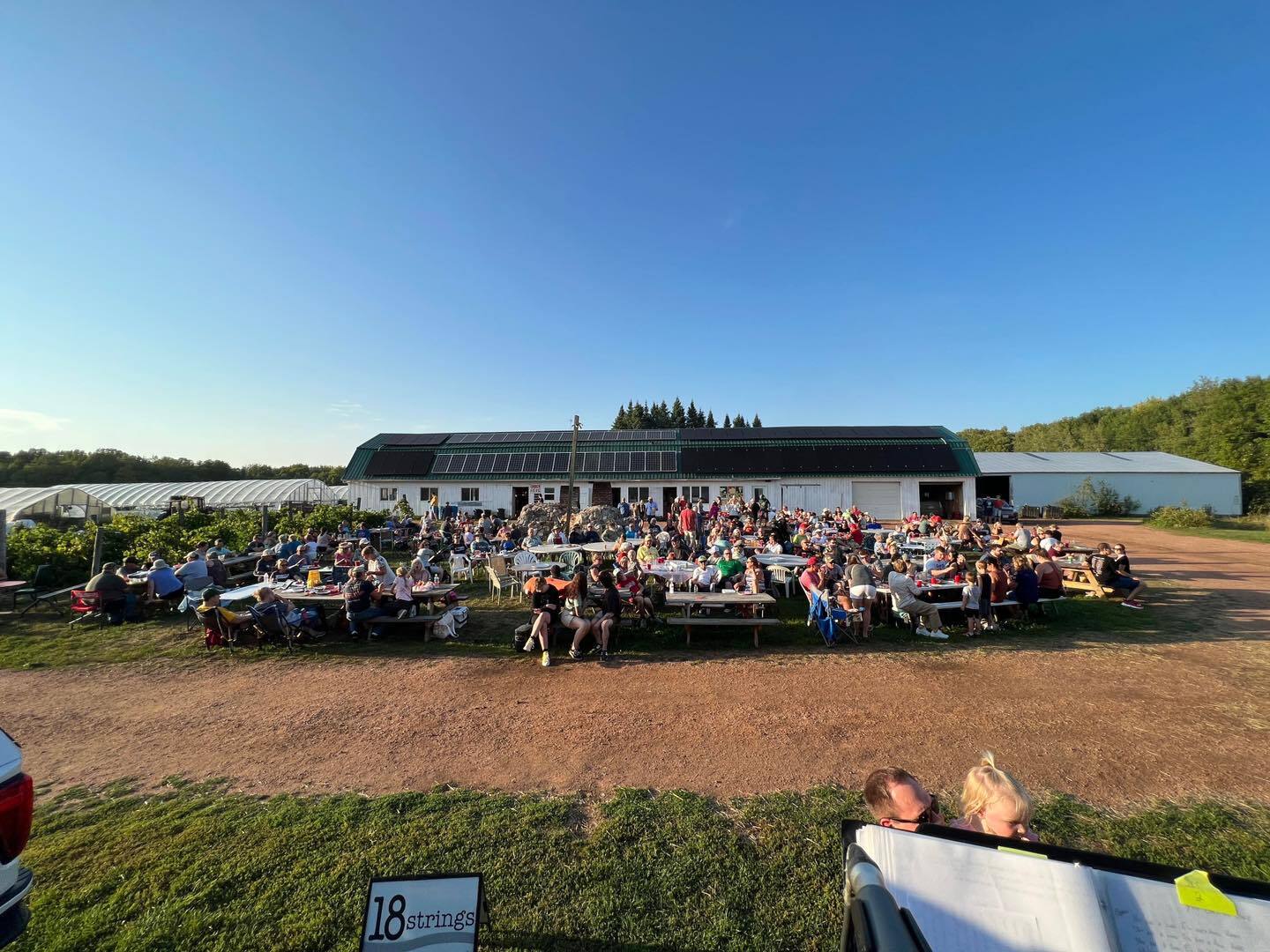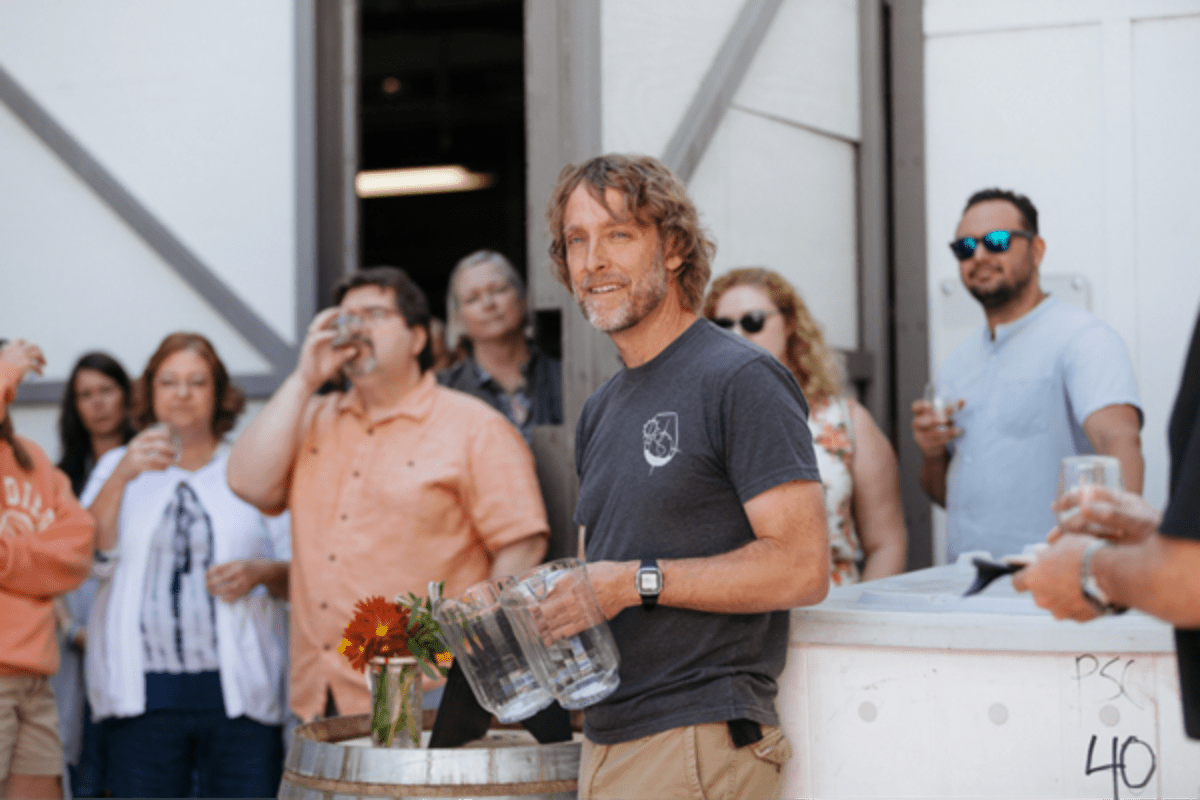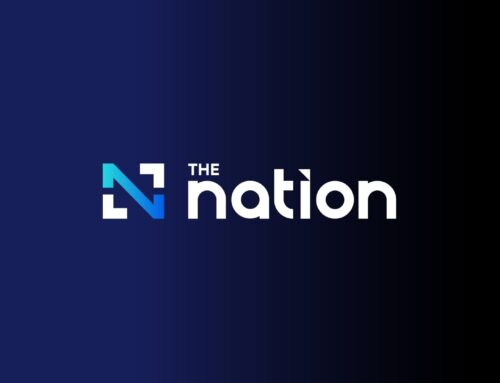For farms and rural businesses, a fresh and funded harvest includes the sun
November 12, 2024
In Athens, Wisconsin, the lush green fields surrounding Stoney Acres Farm support a diverse farming operation, including cattle, pigs, wheat, and organic produce. Once a week during the summer, third-generation farmer Tony Schultz hosts a “Pizza on the Farm” night, selling pies made with his tomatoes, basil, vegetables, and pork. Even the pizza crust is made from his homegrown wheat.
Sitting on the roof of the barn as visitors enter the property is a 23kW array of solar panels that power the farm’s operations. While solar originally was low on Schultz’s investment priority list, it became financially feasible once he took advantage of grants from the USDA’s Rural Energy for America, or REAP, program. This federal initiative provides grants and loans for projects like his. REAP funded about 40% of the two solar installations that now provide most of Stoney Acres Farms’ power.
The panels cut his monthly power bill from $800 to $200 or less per month, Schultz says. He’s surprised solar companies aren’t getting the word out better, but he wants fellow rural business and farm owners to know about the grants. “Even if you don’t care about your carbon footprint, it’s an easy investment,” Schultz said. “My initial cost has already been repaid and then some because of the REAP grants. It’s something that gives back.”
Harvesting energy savings in rural communities
REAP is a federally funded program that provides grants and loans to help rural businesses put in a wide variety of clean and energy-efficient technologies. The program partially funds projects that can range from solar panels and battery storage to efficient greenhouse HVAC systems and produce refrigerators.
REAP was initially funded through the Farm Bill, which allocated $50 million per year to support renewable energy and efficiency projects for small farms and rural businesses. The Inflation Reduction Act of 2022 quadrupled that amount, adding $2 billion over 10 years. Farmers and rural small business owners can now apply for grants of up to $500,000 for energy efficiency projects and to $1 million for renewable energy systems.
The REAP grants can break down financial barriers to renewable energy, said Emma Searson, a policy & advocacy campaigner with Solar United Neighbors (SUN), a national nonprofit dedicated to helping people access solar. SUN provides guidance and support to farmers and rural small business owners applying for REAP funding. “With that funding, those projects suddenly make more sense for a small farmer or rural business owner,” Searson said. “And it’s a powerful equity tool. Rural areas often have limited access to clean, affordable energy technologies, but the REAP program gives extra weight to applications from underserved rural communities.”
Beyond the obvious financial advantages, solar projects can come with a host of other unplanned benefits, Searson said. Energy security and resilience are crucial for farmers, who risk major losses if the power fails during weather events. Many in rural areas also value independence — producing energy on-site aligns with their values of self-reliance. It also helps demonstrate environmental stewardship to customers.

Generating energy can also promote financial stability, which can allow businesses to invest back in their business. In some cases, it can even create extra income by allowing them to sell power back to the grid. When solar-hosting businesses produce more energy than they need, the excess electricity is sent back into the power grid for use by others, and the businesses can credit on their utility bill for the energy they contributed.
For Schultz, while the cost savings of solar was his initial motivator, he’s also noted other unexpected perks. “People are impressed when they see our solar panels — they’re part of our identity,” he said. “Our solar installation validates Stoney Acres as a sustainable family farm.”
Avoiding outages, selling energy back
Near Sedona, Arizona, vintner and winery owner Eric Glomski creates wines that reflect the Verde Valley at Page Springs Cellars. He’s also proud that the winery is now completely powered by renewable energy, thanks to solar arrays and Tesla commercial battery storage funded by REAP grants. The grants covered roughly 25% of the system’s cost, and Glomski said that after just six years, the winery has already recouped the investment.
Energy independence was a huge motivator for the transition to solar. “The weekends are our biggest revenue generators at the winery,” Glomski said. “If we lose power and need to close for a day during the high season, the business loses almost $15,000.” He also appreciates the energy flexibility — the batteries allow him to store energy to use during peak hours when rates are high, and the winery often sells energy back to the grid.

The most tangible benefits of the solar implementation were on the winery’s bottom line, Glomski said. But it’s also had intangible benefits for the vineyard’s revenues and reputation. “People want to put their dollars with businesses that take sustainability seriously,” he said. “And we’ve gotten so much visibility from our focus on renewable energy — we’ve had newspaper and magazine features, even won awards.”
Other unexpected benefits have included the increased sense of pride that employees take in the business. Glomski highlights the story of an employee who educated herself about the winery’s sustainability practices and now gives eco-tours of the winery to visitors. “The solar panels were a big part of that,” he said.
As Page Springs Winery enjoys the benefits of the REAP program, Glomski hopes that other farmers in his region will follow suit. “I know farmers who spend $30,000 [or] $40,000 a year on pumping water,” he said. “If they could use the REAP program to fund solar as their energy source, it would make a big difference in their bottom line.”
Even though REAP has become more popular and grants more competitive, Searson still emphasizes that the program is a critical resource. “REAP is a remarkable and impactful opportunity for farmers and rural small businesses,” she said. “It can make solar or other energy efficiency projects financially attainable. These technologies can make a huge difference for your business or farm in the long term.”
Solar United Neighbors (SUN) has developed a 10-week program that helps walk farmers and rural small business owners through the REAP application process. Those interested in assistance can join online: Ready, Set, Solar!
Search
RECENT PRESS RELEASES
Related Post



